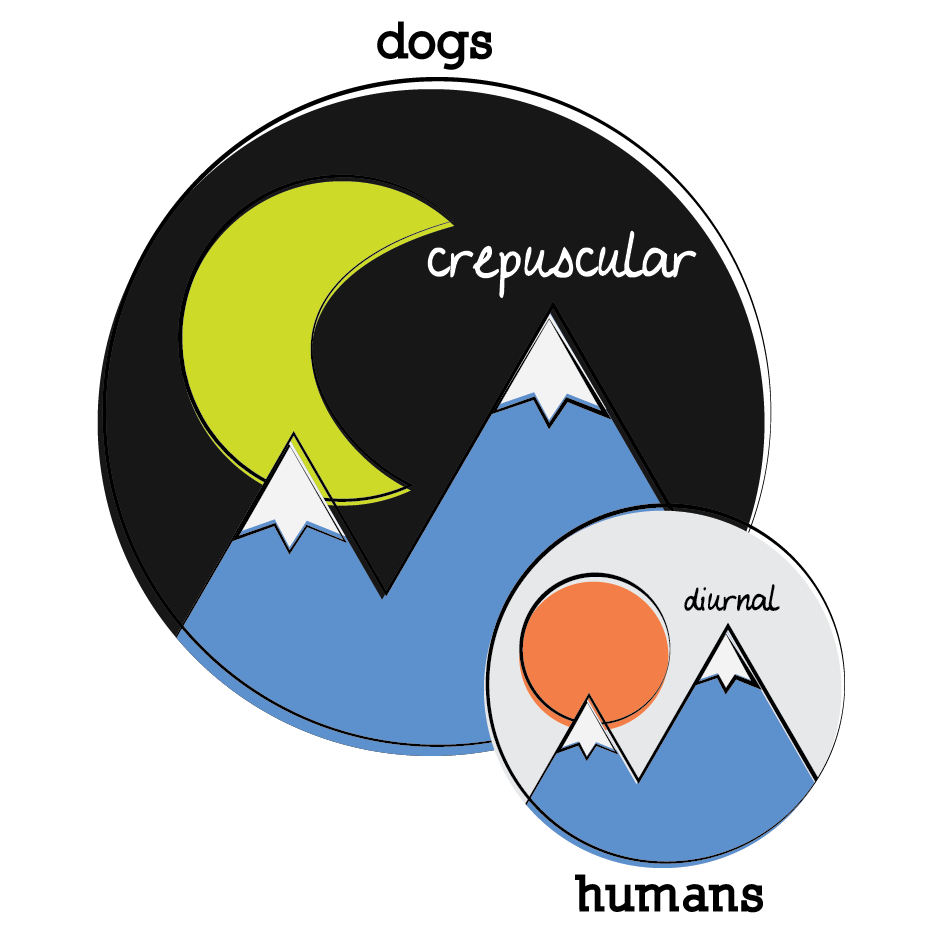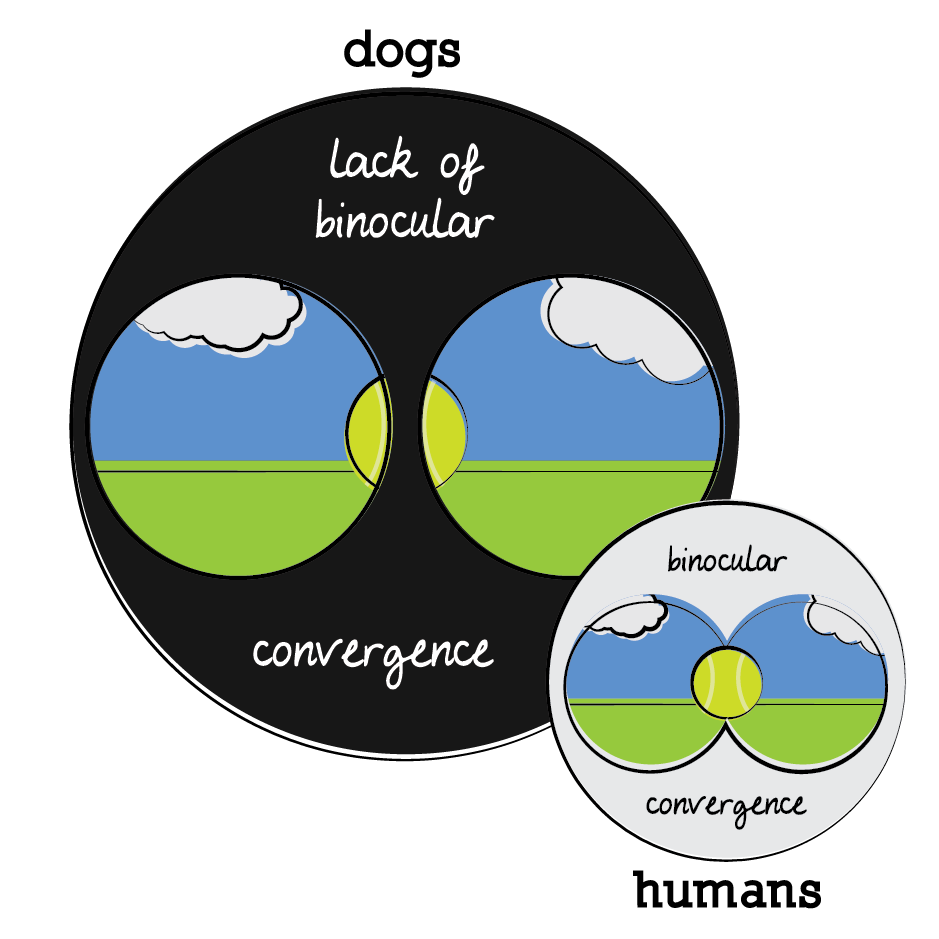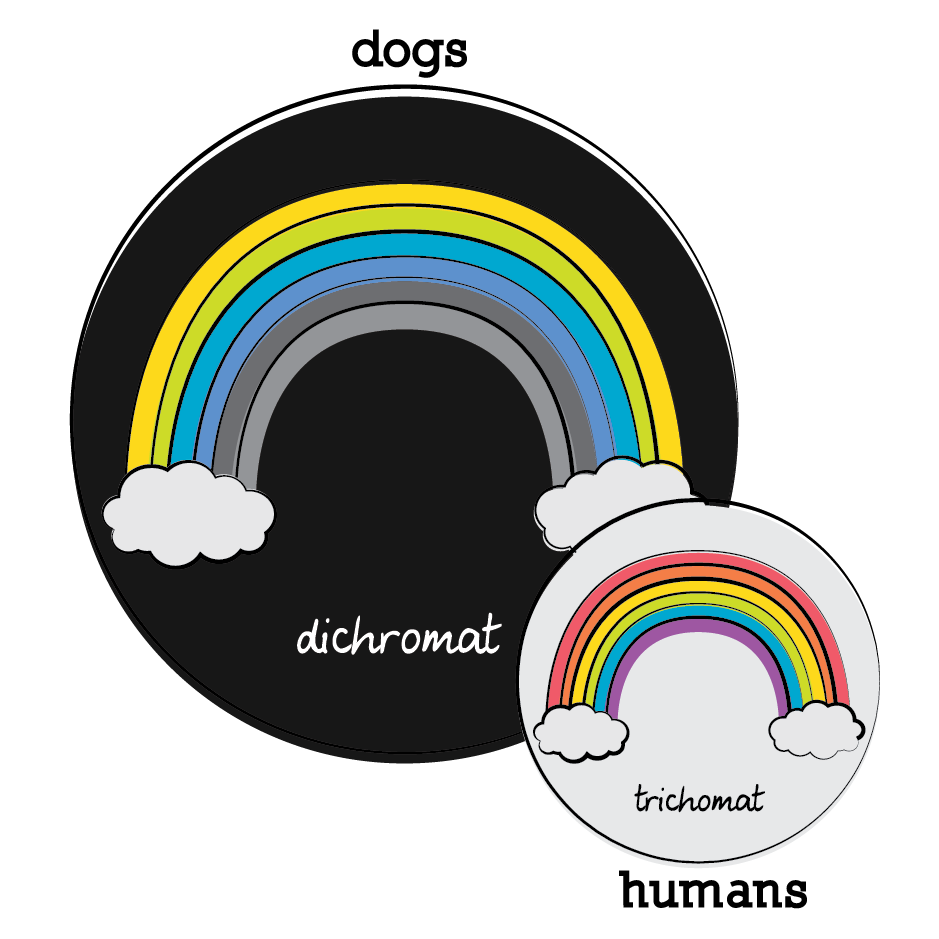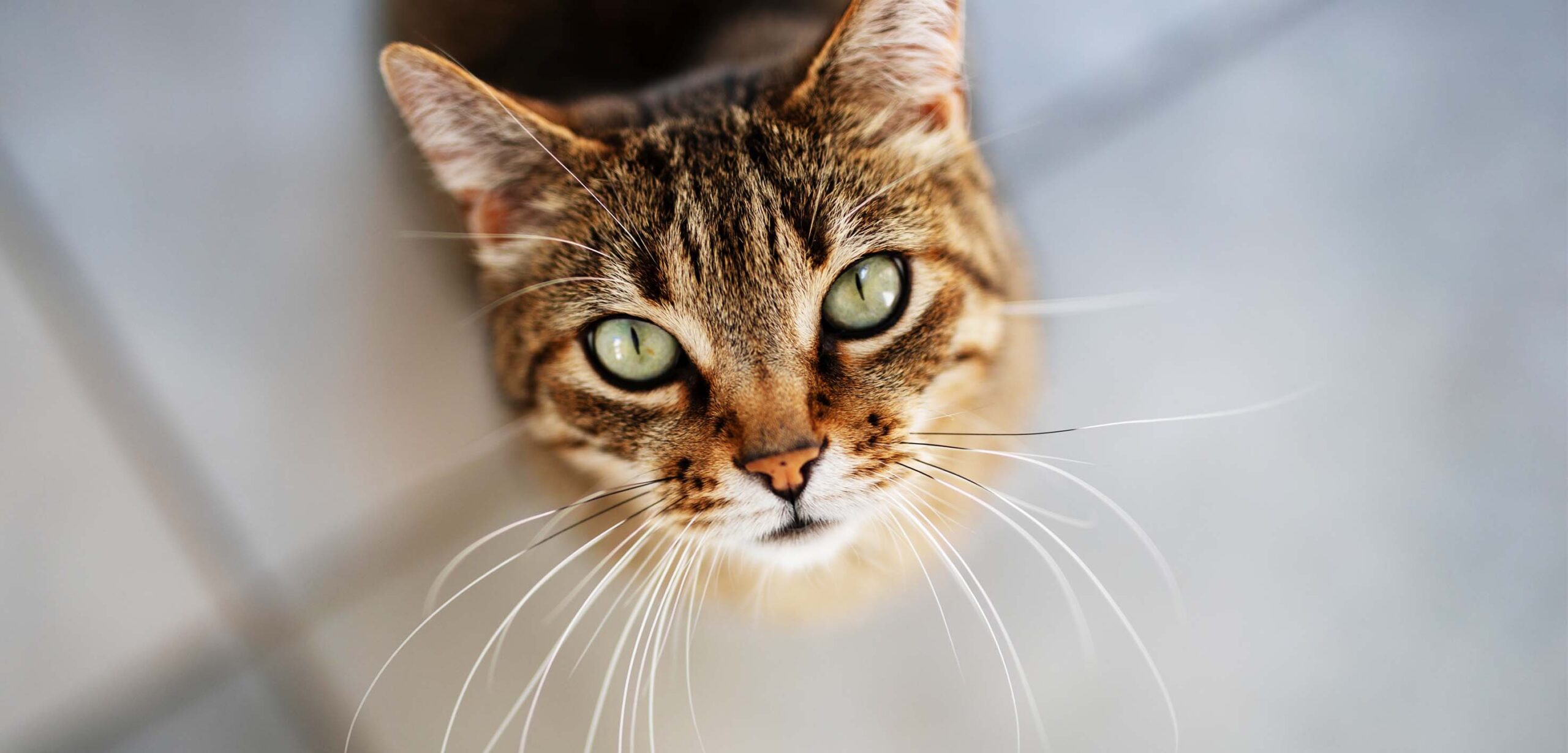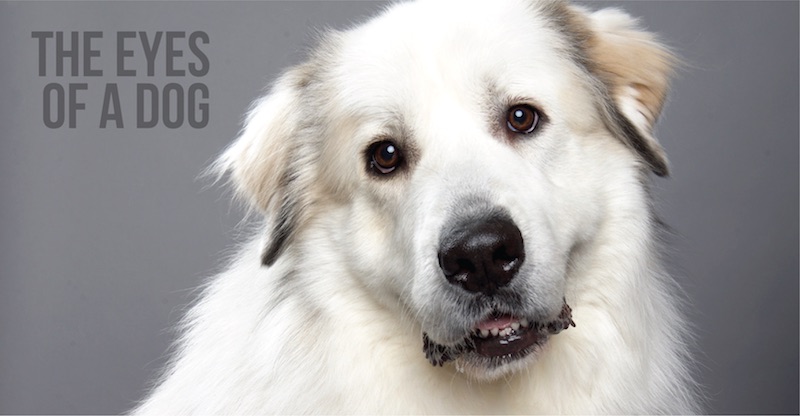
While secondary to the nose for the dog, the eyes are an incredibly fascinating feature of our canine companions. We’ve all wondered at least once how our dogs see the world (or why they inexplicably bark at nothing). Take a gander at these five interesting facts about the canine eye:
1. Crepuscular
Before domestication, dogs were more crepuscular (active at dawn and dusk) than diurnal (active during the day). Because of this, dogs are better apt for seeing in the dark and detecting movement in low light settings. Perhaps you’ve noticed your pet’s eye glowing as they glance at you from the unlit living room. As creepy as it may seem at times, this reflection is because of a layer on the eye that allows it to reflect light, giving itself another shot at picking out objects in the dark.
Dogs and cats thrive on the movement of their prey in those low-light settings. The eyes are geared toward catching a change in the environment rather than picking out the details. Your dog may be incredible at catching the frisbee as the sun is setting, even if you are having a difficult time tracking with it. We humans have the upper hand when it comes to details, colors, and depth though.
2. Binocular Convergence
The position of a dog’s eyes in relation to humans also impacts how it sees the world. A dog’s eyes are wider set than humans’, which allows a dog great peripheral vision (but hampers it’s ability to see things right in of it’s nose). You’ve likely seen the effects of this if you’ve ever watched a treat leave your hand, setting your dog up for the perfect catch, but disappointedly watch it bonk your pup right between the eyes.
Dogs lack binocular convergence, or the overlap of vision from each eye. This is part of the reason a dog’s depth perception is just subpar. They may not be able to catch that treat up close, but throw a tennis ball slightly to the side of your dogs head from a distance, and his accuracy will greatly improve.
3. Dichromat
Additionally, contrary to the old wive’s tale, dog’s do not see in black and white. Humans and dogs alike have rods and cones in their eyes that contribute to the vision process. Humans have three types of cones (trichromat), while dogs only have two (dichromat). The extra cone humans have allows us to see certain colors that dogs are unable to see.
Dogs likely just see the world in yellows, blues, and grays. (Interestingly, many birds have four cones, and butterflies have five. But, mantis shrimp–these crazy looking, aggressive little crustaceans at the bottom of the ocean–hold the record at a whopping sixteen cones. Imagine what the world would look like with more than five times the photoreceptors we currently have!).
In her book, Inside of a Dog, cognitive scientist Alexandra Horowitz explores the mind of her dog Pump through observing her normal daily activity. Below are some concepts explored in her book, rewritten and adapted for this post. If you are looking for an interesting book, I highly recommend this one – its especially fun when you can watch your own dogs while reading. I’ve noticed many of her observations in my own dogs.
4. "Selective" Vision
Dogs tend to have “selective vision”. Although not an entirely scientific condition, dogs often will not notice certain objects until an object they are interested in interacts with it. For example, a dog may not acknowledge the existence of a book sitting on the table. He may walk past it time and time again, without even taking an interest in its presence (but why would he anyway? Dogs don’t read!).
However, the moment his human interacts with the book—picks it up, shuffles through the pages—the book magically comes into the dog’s focus. The book, which before was irrelevant, has now established a place in the picture. Though he may not understand what its for, the dog has now recognized there is a connection between the book and his human.
- A quick rabbit hole: For seeing-eye dogs, this is often a big step in training–dogs must recognize things that aren’t in any way significant or interesting to their canine mind, but are important to humans. A great example – a curb. To an untrained dog, a curb means nothing. A curb is practically nonexistent in the grand scheme of a dog’s daily agenda. But to a human—particularly a blind human with a canine aid—a curb is a big deal. It’s the difference between a sidewalk, and a busy intersection. A seeing-eye dog must learn these items and their significance to their human companion before their human has a bad interaction with them.
Though they are a little selective in what they choose to acknowledge, dogs are still very thorough in scanning the environment. They may not acknowledge the book, but in the same moment, they may take issue with the broom that has briefly found a resting spot against the wall. It’s not normally there, and now suddenly it is – a cause for concern for protective pups!

5. Flicker Fusion Rates
Their vision has also awarded them much quicker reflexes than humans. This is in part due to their flicker fusion rate, or the rate at which intermittent frames of light are perceived for a steady, continuous picture.
Think flip books – While the content does seem to be animated, the transition between each animation is just slow enough that our eyes can pick out breaks between flips (though in flip books, that’s kind of the charm of the artistry). In movies however, seeing the break between each frame would make for a terrible headache.
We like TV to flow continuously, without the pauses between each new pose. So, to achieve this, the frame per second rate should be about 60, because humans’ flicker fusion rates are around 60/second. BUT, a dog’s flicker fusion rate is higher, usually around 70-80 frames per second. So, TV looks choppy to a dog, as he can see the breaks between each frame. The activity on the metal box isn’t fluid: it’s unrealistic. (Or rather, it was. TV has since become mostly digital, so this is less of an issue for dogs now. Which is great because we all know how much our dogs love to stay updated on the local news).
This flicker fusion rate does transfer over to other activities, too. We will lose to a dog in a game of long-range frisbee. For one, dogs are usually physically faster (though, that can also depend on the athleticism of the breed). But they also advantage from their flicker rate–the angle of the frisbee is much easier to calculate with 75 frames a second than with 60.
Keep those amazing puppy dog eyes healthy!
– Read our post about the nutrition of vision
– Check out our ocular health supplement

